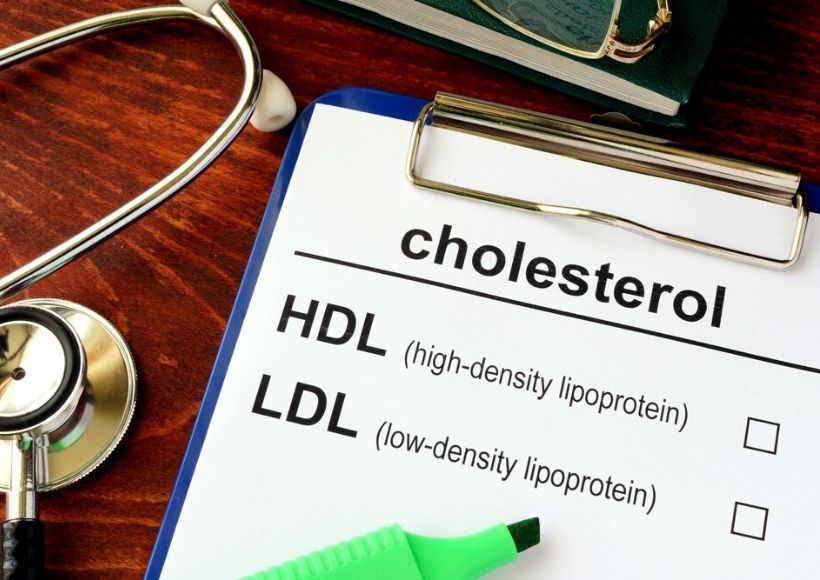According to the Centers for Disease Control and Prevention, more than 102 million American adults have cholesterol higher than healthy levels (200 mg/dL). Also, More than 35 million people having cholesterol levels above 240 mg/dL are at high risk for heart disease and other serious diseases.
Table of Contents
What is Cholesterol?
Cholesterol is a fatlike, waxy substance that is necessary for your body to create vitamin D, cell membranes, and various hormones. It doesn’t dissolve in the blood so it can’t travel through the body by itself.
The combination of proteins and cholesterol called lipoproteins help transport it between cells through the bloodstream. Your doctor can perform a simple test using an Elisa kit to measure your cholesterol levels.
Good Vs. Bad Cholesterol
Lipoproteins are made up of protein on the outside and fat on the inside. There are different types of cholesterol:
Low-Density Lipoprotein (LDL)
Low-density lipoproteins, also known as bad cholesterol, build up in the walls of your arteries, making it difficult for blood to flow through your arteries. It raises the risk of blood clots in the arteries of your heart or brain, which could be fatal.
Eating too many foods with high-fat content increases the LDL level in your blood, also called hyperlipidemia or hypercholesterolemia.

High-Density Lipoprotein (HDL)
High-density lipoproteins, also known as good cholesterol, accumulates excess LDL cholesterol from other parts of your body and delivers it back to your liver. A healthy level of HDL lowers the risk of cholesterol plaque, heart disease, blood clots, and stroke.
Triglycerides
Triglycerides are different from cholesterol. It is a type of lipid used by cholesterol as a source of energy to build cells and certain hormones.
Recommended Cholesterol Levels
Starting at age 20, you should get a lipid panel test to check for high cholesterol, every five years. Healthy total cholesterol levels are the sum of your LDL and HDL.
The normal cholesterol test reading consists of four numbers that are measured in milligrams per tenth-liter of blood. The acceptable levels for each are:
- Total cholesterol should be less than 200 mg/dL.
- LDL should stay between 70-130 mg/dL.
- HDL should be higher than 50 mg/dL.
- Triglycerides should be less than 150 mg/dL.
Your doctor may recommend some other tests if your results are higher than normal to check for diabetes, kidney, and thyroid function.
Symptoms of Bad Cholesterol
There are no visible symptoms of bad cholesterol. In most cases, it causes serious health issues such as heart attack or stroke. However, if you experience any of the following situations, seek immediate medical advice:
Symptoms of a Heart Attack:
- Lightheadedness
- Anxiety
- Nausea
- Indigestion
- Heartburn
- Fatigue
- Difficulty breathing
- Abnormal heartbeat
Symptoms of a Stroke:
- Paralysis or numbness
- Inability to speak
- Stiff muscles
- Severe headache
- Blurred, blackened, or double vision
- Facial asymmetry
- Problems with coordination.
Risk Factors
Factors that can increase the risk of developing bad cholesterol include:
- Consuming high calories meals
- Having a family history of high cholesterol
- Smoking tobacco products
- Having a body mass index (BMI) of more than 30
- Having hypothyroidism, kidney disease, or diabetes.
Complications Associated With Bad Cholesterol
Bad cholesterol enables accumulation of plaque deposits on the walls of your arteries which can reduce blood flow and can cause complications, such as:
Heart Attack
The buildup of plaque hinders blood flow to the heart called atherosclerosis. If a piece of the plaque breaks off, a blood clot forms which can block the supply of blood flow to the heart and deprive it of essential nutrients such as oxygen.
Chest Pain
If the blood supplier arteries are affected, you may experience severe chest pain and other symptoms of coronary artery disease.
Stroke
Similar to a heart attack, it happens when there is a blood clot present in the artery that supplies blood to your brain.
Peripheral Arterial Disease (PAD)
It can occur when a blood clot blocks the supply of blood to the kidneys, legs, stomach, arms, and feet.
Prevention
Some positive changes in your lifestyle can prevent you from having high cholesterol. To lower your cholesterol level, you must:

- Quit smoking;
- Avoid heavy drinking;
- Exercise regularly;
- Eat a low-salt diet;
- Include whole grains, fruits, nuts, and vegetables in your diet;
- Use good fats in your diet;
- Limit the amount of trans-fat; and
- Maintain a healthy weight.
Commonly Prescribed Medications
If you do not see any improvement even after making such lifestyle adjustments, you may need medications to lower your cholesterol levels. Commonly prescribed medications for high cholesterol are:
- Cholesterol absorption inhibitors, such as ezetimibe (Zetia)
- Statins such as atorvastatin (Lipitor), simvastatin (Zocor), rosuvastatin (Crestor), fluvastatin (Lescol), etc.
- Bile-acid-binding resins or sequestrants, such as cholestyramine (Prevalite), colestipol (Colestid), colesevelam (Welchol), etc.
- Injectable medicines
Always consult your doctor before taking any of the above-mentioned medicines.
Takeaway
Because high cholesterol doesn’t cause any visible symptoms, it is important to monitor your cholesterol levels and make some healthy lifestyle changes.

